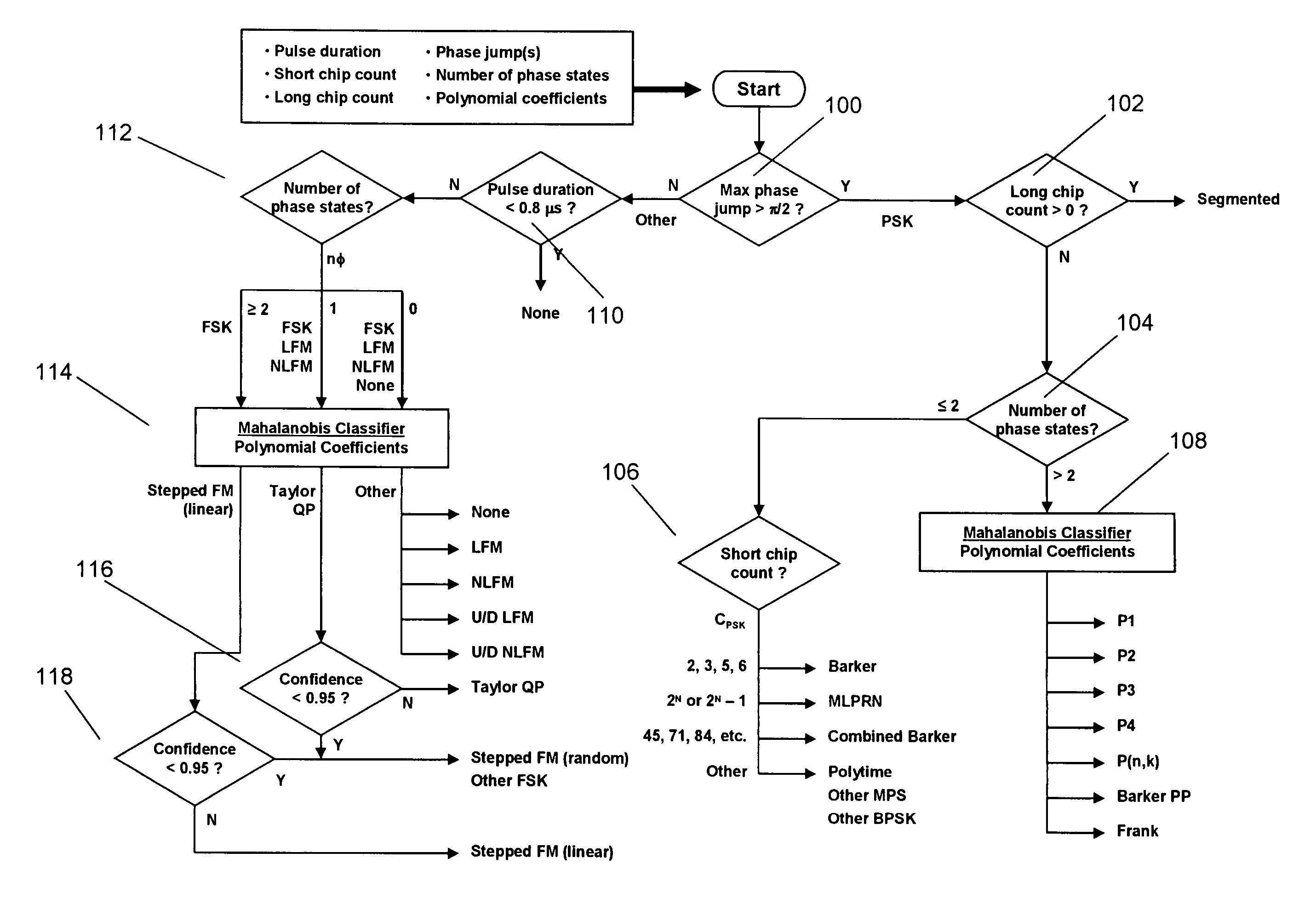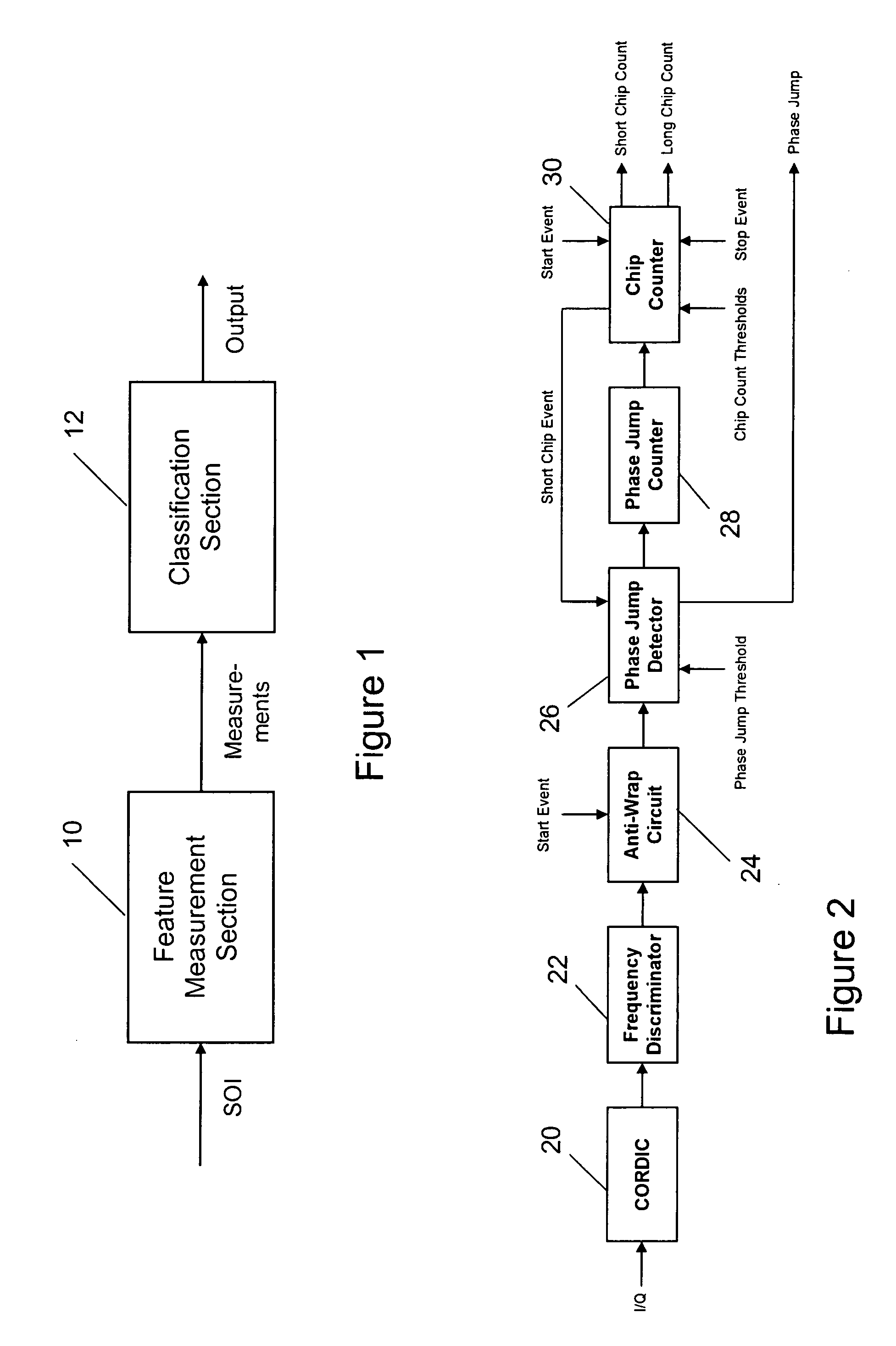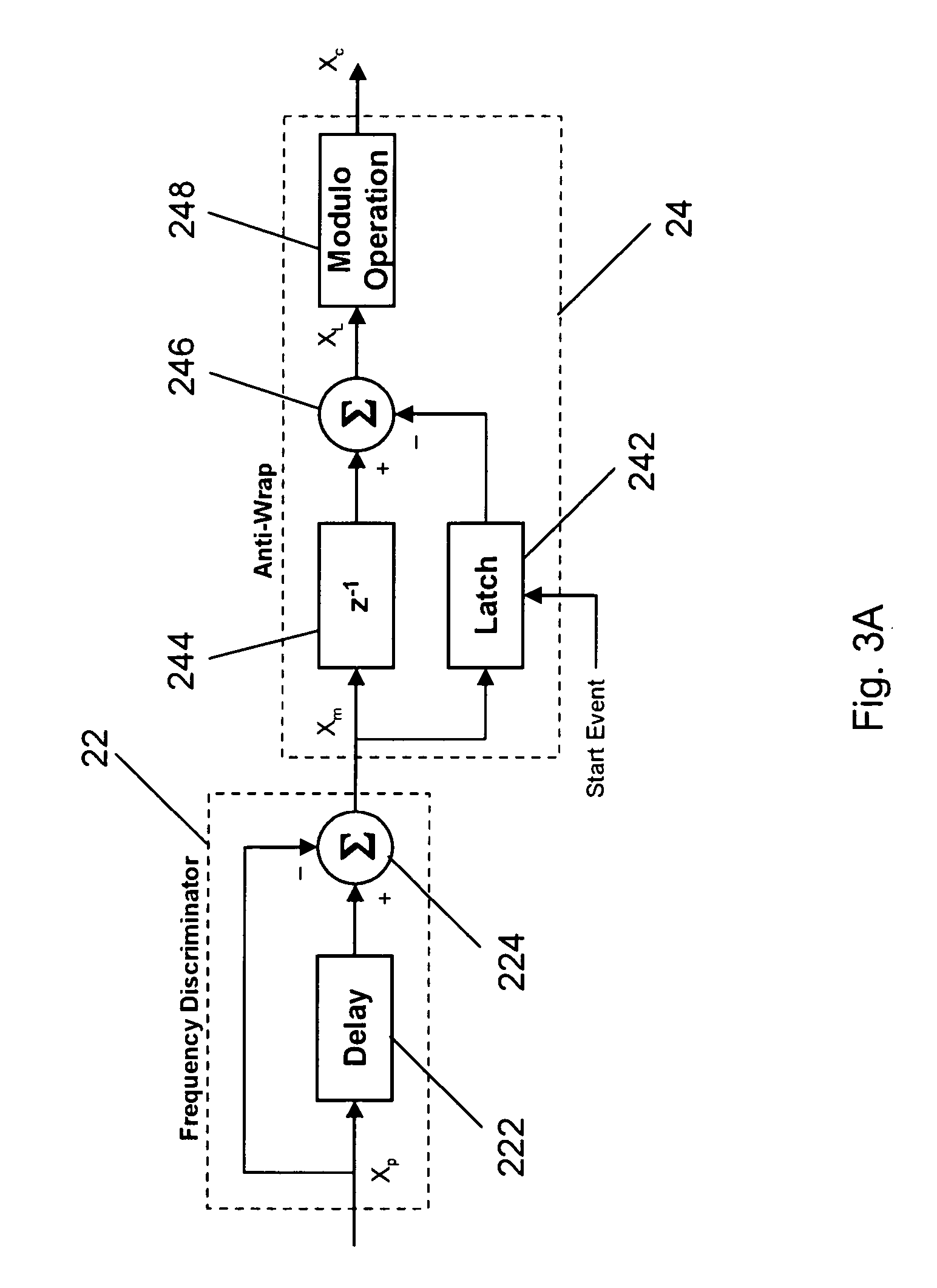Modulation feature measurement and statistical classification system and method
a technology of module features and statistical classification, applied in the field of signal processing, can solve problems such as the inability to ascertain the robustness of the system
- Summary
- Abstract
- Description
- Claims
- Application Information
AI Technical Summary
Benefits of technology
Problems solved by technology
Method used
Image
Examples
Embodiment Construction
[0022]FIG. 1 shows a block diagram of a general feature measurement and classification system designed to produce an estimate of the intentional modulation present on a signal pulse. As shown in FIG. 1, the system may be divided into two sections: a feature measurement section 10 and a classification section 12. The input signal or signal of interest (SOI) is input to the feature measurement section 10 which measures various features of the SOI. The measurements made on the SOI by the feature measurement section 10 are passed to the classification section 12. The classification section 12 processes the measurements and outputs an estimate of the modulation type on the SOI and in many cases provides a confidence level for the estimate.
[0023] Feature Measurement Section 10
[0024] The classification section 12 utilizes several features measured by the feature measurement section 10, including pulse duration, long and short chip counts, phase jumps, phase state count, and a phase modula...
PUM
 Login to View More
Login to View More Abstract
Description
Claims
Application Information
 Login to View More
Login to View More - R&D
- Intellectual Property
- Life Sciences
- Materials
- Tech Scout
- Unparalleled Data Quality
- Higher Quality Content
- 60% Fewer Hallucinations
Browse by: Latest US Patents, China's latest patents, Technical Efficacy Thesaurus, Application Domain, Technology Topic, Popular Technical Reports.
© 2025 PatSnap. All rights reserved.Legal|Privacy policy|Modern Slavery Act Transparency Statement|Sitemap|About US| Contact US: help@patsnap.com



